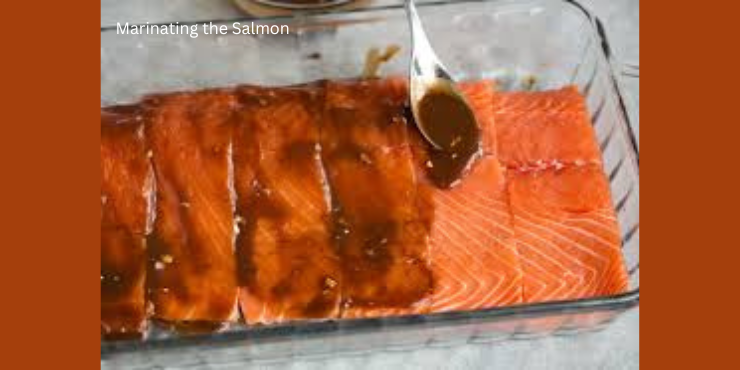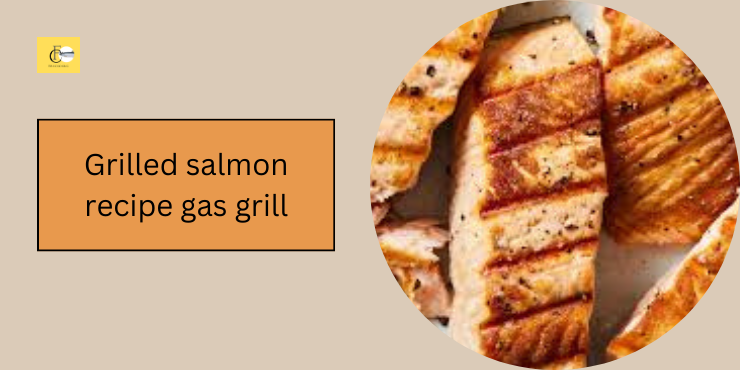Introduction
Grilled salmon recipe gas grill can be an incredibly rewarding experience. Whether you’re hosting a summer barbecue or simply looking to enjoy a healthy meal, grilled salmon offers a delicious and nutritious option. In this guide, we’ll walk you through the steps to achieve perfectly grilled salmon every time. Ready to impress your taste buds and your guests? Let’s get grilling!
Choosing Your Salmon
Types of Salmon
The first step to perfect grilled salmon is selecting the right type of salmon. Common types include Atlantic, Sockeye, Coho, King (Chinook), and Pink salmon. Each has its unique flavor profile and fat content. For grilling, Sockeye and King salmon are often preferred due to their rich flavor and firm texture.
Fresh vs. Frozen
Fresh salmon is ideal for grilling, but high-quality frozen salmon can also work well. If using frozen salmon, ensure it’s thoroughly thawed in the refrigerator before grilling. Avoid thawing at room temperature to prevent bacterial growth.
Selecting the Perfect Cut
For grilling, fillets or steaks are the best choices. Look for cuts with even thickness to ensure uniform cooking. Fillets with skin on one side help hold the fish together on the grill and add extra flavor.
Preparing the Salmon
Cleaning the Fish
Rinse the salmon under cold water and pat it dry with paper towels. Removing any scales left on the skin is essential if you plan to eat the skin.
Removing Bones
Run your fingers along the fillet to check for pin bones. Use fish tweezers or needle-nose pliers to remove any you find. This step ensures a pleasant eating experience.
Skin On or Off?
Leaving the skin on can help keep the salmon moist and makes it easier to handle on the grill. However, if you prefer skinless salmon, feel free to remove it.
Marinating the Salmon

Benefits of Marinating
Marinating enhances the flavor and moisture of the salmon. It can also help tenderize the fish, making it more succulent.
Simple Marinade Recipes
Here are a few quick and easy marinade ideas:
- Lemon Herb Marinade: Mix lemon juice, olive oil, minced garlic, and chopped fresh herbs like dill or parsley.
- Soy Ginger Marinade: Combine soy sauce, grated ginger, minced garlic, and a touch of honey.
- Spicy Marinade: Blend olive oil, lime juice, chili powder, and a dash of cayenne pepper.
Marinating Time and Tips
Marinate the salmon for at least 30 minutes and up to 2 hours. Avoid over-marinating, as the acid in the marinade can break down the fish’s texture.
Preparing the Gas Grill
Cleaning the Grill
Start with a clean grill to prevent sticking and off-flavors. Scrub the grates with a grill brush to remove any residue from previous use.
Preheating the Grill
Preheat the grill to medium-high heat, around 375-400°F (190-204°C). This ensures even cooking and helps achieve those beautiful grill marks.
Oil the Grates
Using tongs and a paper towel dipped in oil, carefully oil the grill grates. This step prevents sticking and adds to the sear.
Grilling Techniques
Direct vs. Indirect Heat
For salmon, a combination of direct and indirect heat works best. Start by searing the salmon over direct heat and then move it to indirect heat to finish cooking.
Ideal Temperature for Grilling
Maintain a grill temperature of 375-400°F (190-204°C). Too high, and you risk burning the outside before the inside is cooked. Too low, and the fish might stick to the grates.
Using Grill Mats or Foil
Grill mats or aluminum foil can be used to prevent sticking and flare-ups, especially if marinating with sugary sauces. However, they might prevent the formation of grill marks.
Cooking the Salmon
Placing the Salmon on the Grill
Place the salmon skin-side down on the grill. This helps protect the flesh from the direct heat and adds flavor from the skin.
Monitoring and Adjusting the Heat
Keep an eye on the salmon as it cooks. Adjust the heat if necessary to avoid flare-ups and ensure even cooking.
Flipping the Salmon
Cook the salmon skin-side down for most of the time. Flip it only once, halfway through cooking, to avoid breaking the fillet.
Checking for Doneness
Using a Meat Thermometer
The internal temperature should reach 145°F (63°C). Insert the thermometer into the thickest part of the salmon to check.
Visual and Texture Cues
The salmon should be opaque and flake easily with a fork. The flesh should be firm but not dry.
Adding Flavors
Using Wood Chips for Smoking
For an extra layer of flavor, consider using wood chips. Soak them in water for 30 minutes and place them in a smoker box or directly on the coals for a smoky touch.
Adding Herbs and Citrus
Fresh herbs like dill, rosemary, or thyme, and slices of lemon or lime, can be placed directly on the salmon or inside the grill for added aroma and taste.
Serving Suggestions
Ideal Side Dishes
Grilled vegetables, quinoa salad, or a simple green salad make great sides. Consider asparagus, zucchini, or bell peppers for a healthy and colorful plate.
Sauce Pairings
Classic pairings include dill sauce, tzatziki, or a simple lemon butter sauce. Experiment with mango salsa or chimichurri for a unique twist.
Common Mistakes to Avoid
Overcooking the Salmon
Salmon cooks quickly and can dry out if left on the grill too long. Keep a close eye and check for doneness early.
Not Preheating the Grill
A properly preheated grill prevents sticking and ensures even cooking. Don’t skip this step!
Using Too Much Marinade
Excess marinade can cause flare-ups and burn. Pat the salmon dry before placing it on the grill if it’s too wet.
Health Benefits of Grilled Salmon
Nutritional Value
Salmon is packed with protein, vitamins, and minerals. It’s a great source of B vitamins, potassium, and selenium.
Omega-3 Fatty Acids
Rich in omega-3 fatty acids, salmon supports heart health, reduces inflammation, and can improve brain function.
Cleaning Up
Cleaning the Grill Grates
After the grill cools, clean the grates with a grill brush to remove any stuck-on bits. This keeps your grill ready for the next use.
Storing Leftovers
Store leftover salmon in an airtight container in the refrigerator for up to three days. Enjoy it cold or gently reheated.
Grilled Salmon Variations
Cedar Plank Salmon
Grilling on a soaked cedar plank imparts a subtle smoky flavor. The plank also prevents sticking and adds a beautiful presentation.
Honey Glazed Salmon
A simple honey glaze caramelizes beautifully on the grill, adding a sweet contrast to the savory fish.
Spicy Grilled Salmon
For a kick, rub the salmon with a mix of chili powder, paprika, and cayenne pepper. The heat pairs perfectly with the natural richness of the fish.
Conclusion
Grilling salmon on a gas grill is a straightforward process that can yield mouthwatering results. By following these steps, you can ensure your salmon is perfectly cooked every time. Don’t be afraid to experiment with different marinades, grilling techniques, and flavor additions. Happy grilling!
FAQs
How long should you grill salmon on a gas grill?
Typically, salmon takes about 6-8 minutes per side, depending on thickness and grill temperature. Always check for doneness with a thermometer or visual cues.
Should you grill salmon with the skin on or off?
Grilling with the skin on helps keep the salmon moist and intact. You can always remove the skin after grilling if you prefer.
What’s the best way to season grilled salmon?
A simple combination of olive oil, salt, pepper, and lemon works wonders. Feel free to add herbs, spices, or marinades for extra flavor.
How can you tell if grilled salmon is done?
Salmon is done when it reaches an internal temperature of 145°F (63°C), is opaque throughout, and flakes easily with a fork.
Can you grill frozen salmon directly?
It’s best to thaw frozen salmon in the refrigerator before grilling for even cooking and better texture.

